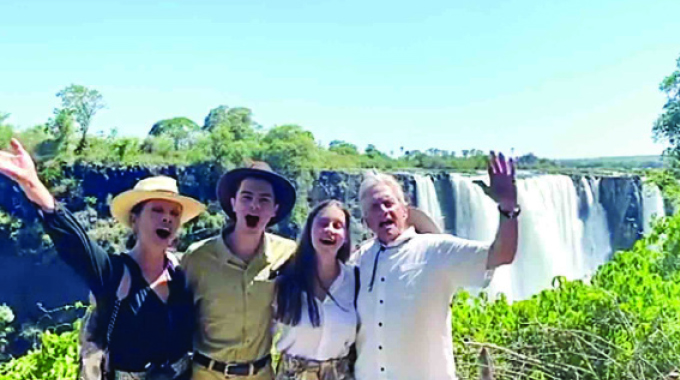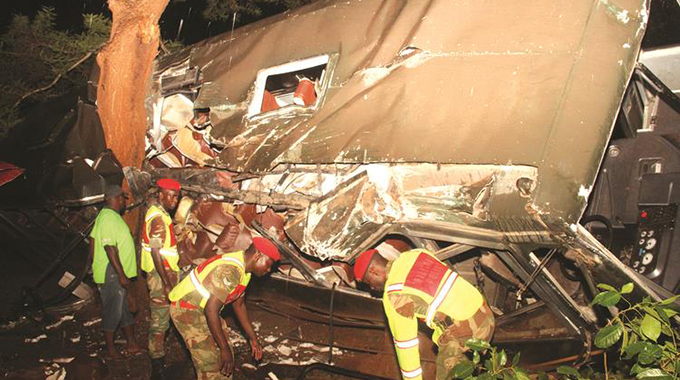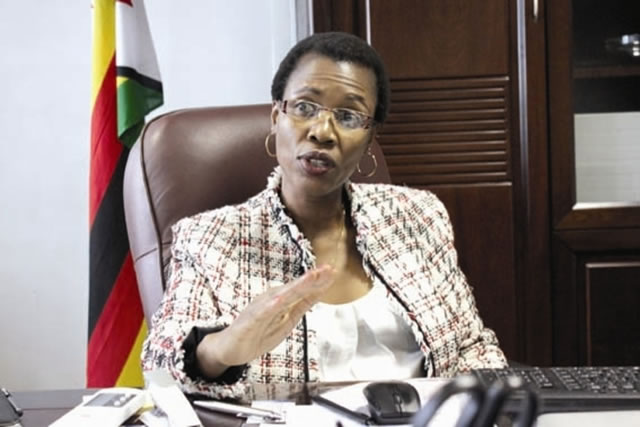EDITORIAL COMMENT : Value of participating in tourism exchanges

Zimbabwe has a unique opportunity to build on recent high-profile tourists visiting the country’s premier tourism resorts to optimise its marketing strategy.
In the past six weeks, Zimbabwe has been visited by BBC’s Stephen Sackur, whose hatchet job was helpfully and thoroughly thrashed by Hollywood celebrities, Michael Douglas and Catherine Zeta-Jones and their children — Dylan and Carys — followed by Trai Byers and Grace Gealey-Byers.
Hot on the heels of the celebrities’ visit was Union of European Football Associations (UEFA) president Aleksander Ceferin.
The UEFA boss has just concluded a 12-day visit during which he and his family toured the Victoria Falls, Hwange National Park, Binga, Matopos, the Great Zimbabwe monument and the Eastern Highlands.
There have been previous other visits to the country by international celebrities — Michael Jackson, Spice Girls and Will Smith, among others.
Zimbabwe has also been a regular participant at international tourism fairs.
Just last year alone, the country attended at least four major world tourism fairs.
It participated in the ITB Berlin — the International Tourism Bourse, considered the world’s largest tourism trade fair.
As part of previous participations at the ITB Berlin, in 2018 Zimbabwe received just over 37 300 tourists from Germany.
Zimbabwe attended the Feira de Tourism, also known as the International Tourism Trade Fair (FITUR) in Spain.
Arrivals from that country rose from 8 303 in 2017 to 10 478 in 2018.
Spain is the sixth largest contributor of arrivals after the UK, Ireland, Germany, France and the Benelux countries (Belgium, the Netherlands and Luxembourg and Italy).
Last year, Zimbabwe participated at the China International Travel Mart.
Chinese tourist arrivals in Zimbabwe rose from 14 407 in 2017 to 19 428 in 2018.
In November last year, Zimbabwe took part in the World Travel Market, London.
In 2016, 5 073 British tourists arrived in Zimbabwe, while during 2017 that figure rose to 12 765.
Annually, Zimbabwe hosts the Sanganai/Hlanganani tourism fair at the Zimbabwe International Trade Fair grounds in Bulawayo, which last year attracted 170 international buyers and 25 members from international media organisations.
This week, the Zimbabwe Tourism Authority (ZTA) is taking part in the 27th edition of the South Asia Travel and Tourism Exchange (SATTE), which brings together global travel and tourism players, focusing on tourism trade exchange.
This is taking place in New Delhi, India.
Zimbabwe’s participation at the Incentive Business Travel and Meetings (IBTM) World Exhibition in November last year resulted in the country being promoted as a Meetings, Incentives, Conferences and Exhibitions (MICE) destination.
And between 2017 and 2018, tourist arrivals from India have risen from nearly 7 000 to almost 12 500.
As part of a strategy to grow the number of tourists from the Asian nation, Indian tourists are able to obtain visas at ports of entry.
For some time, the Ministry of Environment, Climate Change, Tourism and Hospitality Industry and ZTA have undertaken and conducted international campaigns that include the recent participation in Spain and at the Berlin International Travel Exchange.
The arrival statistics are important for Zimbabweans to have a comprehensive appreciation of the outcomes/deliverables of these campaigns, including facility trips for international travel writers and the resultant contribution to the economy.
The arguments for participation at these travel exchanges are persuasive — tourism is one of the fastest growing industries in the world with capacity to contribute to poverty reduction while offering opportunities for sustainable development.
Participation at these tourism fairs helps to nurture and grow new and emerging markets, and critically boost confidence in the market and counter negative perceptions about Zimbabwe.
While it has been good to focus on international tourist traffic because there is potential to attract investment in other sectors of the economy, there is need to remember that international tourism can only be as good and strong as domestic tourism.
Concerns about the attitude of operators in the industry to domestic tourists require re-examining.
The sense is that domestic tourists are an afterthought and that where they are accommodated the pricing matrix is punitive and consequently beyond their reach.
A stronger domestic tourism will sustain the industry in times when the international market suffers fluctuations or seasonal downward trends.
In targeting domestic tourists, both the ministry and ZTA need to encourage opportunities for family and schools’ packages because younger members of the family who grow up appreciating the value of vacations and the beauty of domestic resorts, will be good ambassadors and supporters of the industry.
They will value protecting wildlife and the importance of preserving the natural scenic beauty the country is richly endowed with.
For all their efforts, the ministry and ZTA need to frame their campaigns and projections in the context of performances of tourist traffic into neighbouring countries.











Comments